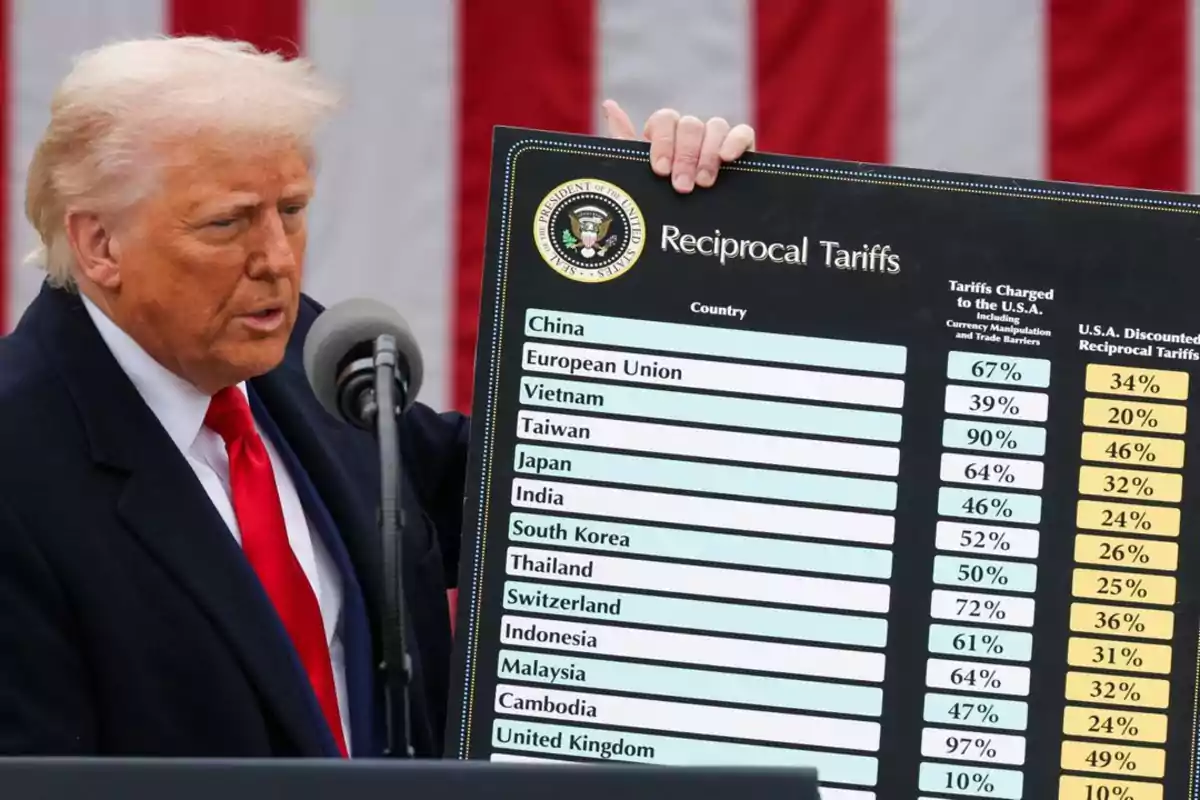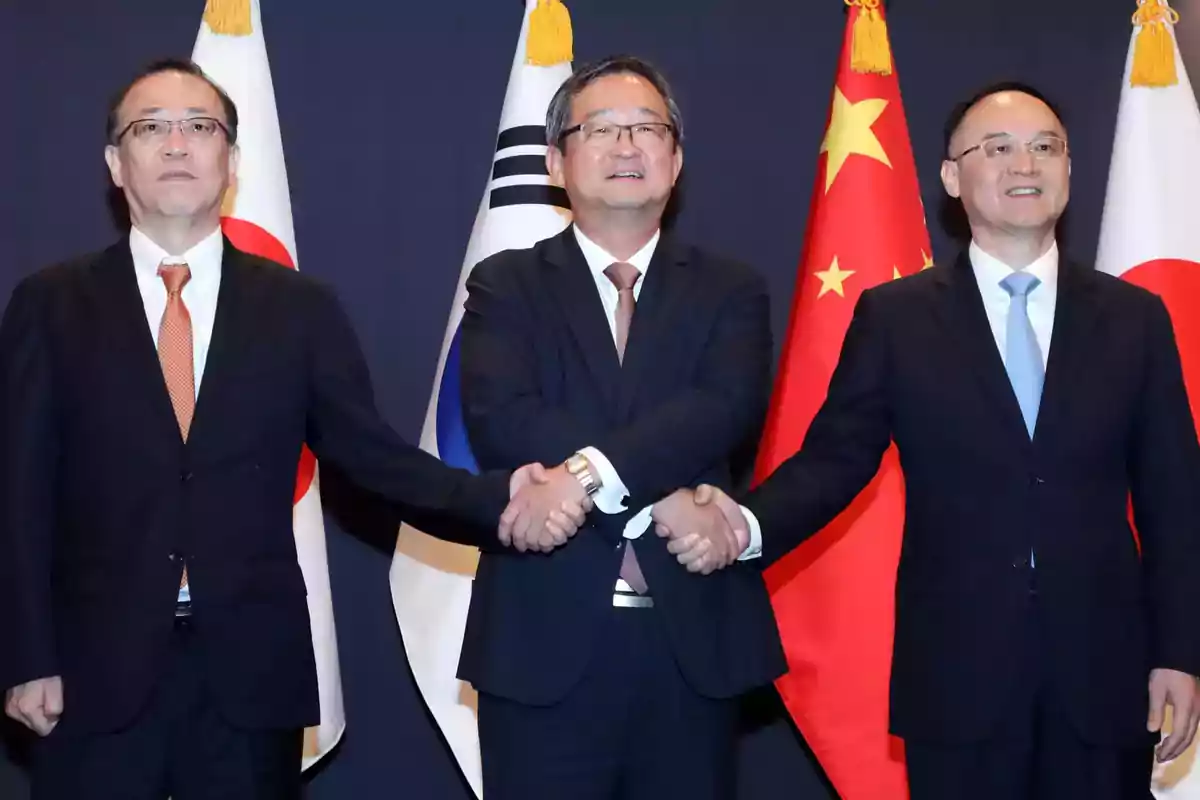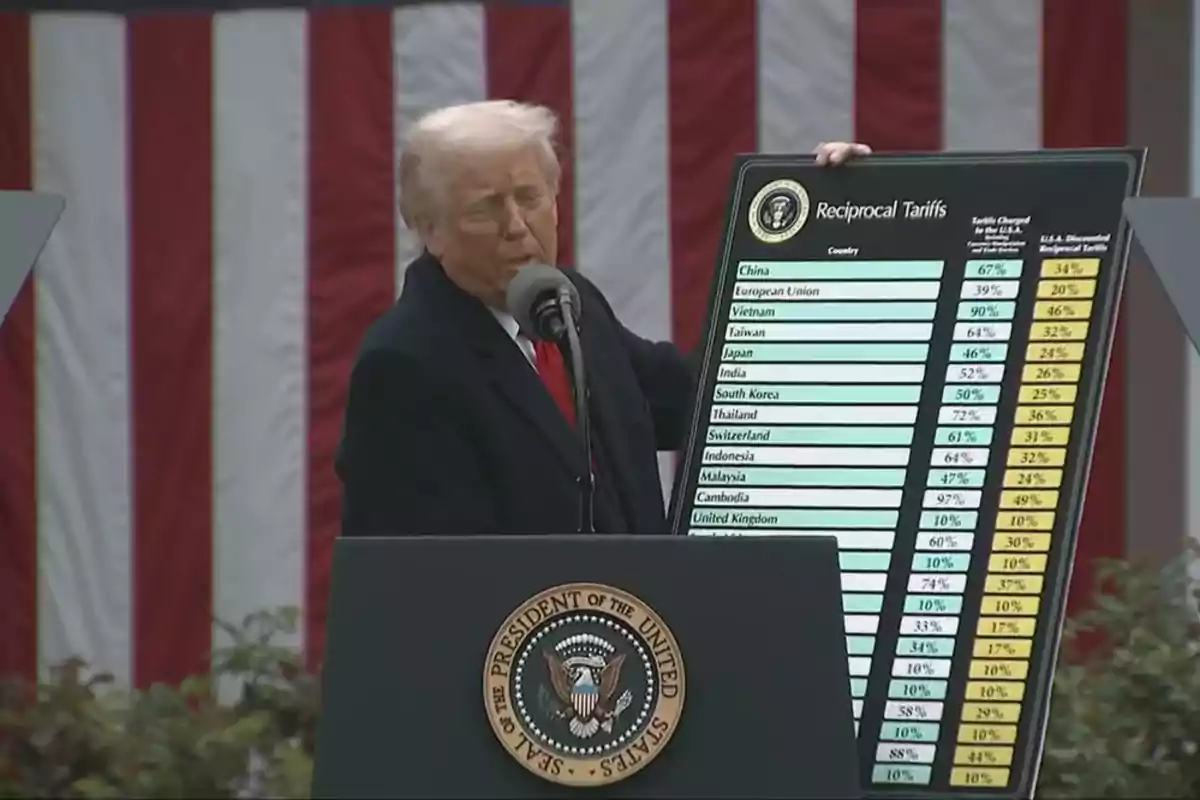
How Trump's import tariff formula works
The President of the United States announced yesterday the imposition of import tariffs for different countries
The Administration of President Donald Trump introduced a new approach to calculate tariffs through a formula that is primarily based on existing trade balances, which often represented a trade deficit for the United States. The central goal of this methodology is to reduce these trade deficits that the United States maintains, in addition to equalizing the import duty rates that other countries have with the United States. In a statement released by the United States Trade Representative (USTR) on Wednesday night, it was detailed how the tariffs would be calculated. The formula begins by dividing a country's trade surplus with the United States by its total exports, using data from the U.S. Census Bureau for 2024. Then, that figure is divided by two to produce a "discounted rate". For example, China, which had a trade surplus with the United States of 295 billion dollars over a total of 438 billion dollars in exports in 2024, has a ratio of 68%. Applying Trump's formula, a tariff rate of 34% is obtained.



More posts: